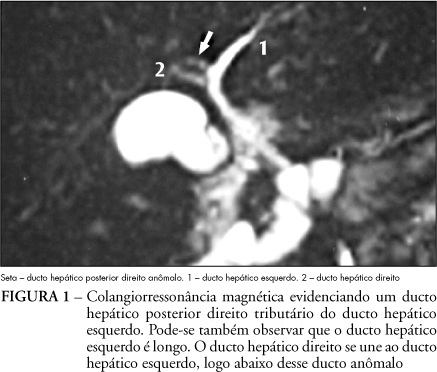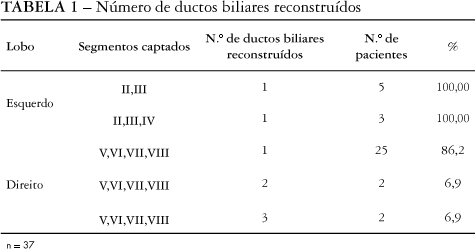BACKGROUND: Anatomic variations of the biliary tree are frequent and increase complications after liver transplantation. AIM: To describe the anatomy of the bile ducts of donors and recipients of living related liver transplantation. METHODS: From March 1998 to September 2002, the study was retrospective (23 transplantations). From October 2002 to August 2003, the study was prospective (17 transplantations). We studied the hepatic anatomy of 80 consecutive patients (40 donors and 40 recipients) of the living-related liver transplantation program of the "Hospital de Clínicas da Universidade Federal do Paraná" and the "Hospital Nossa Senhora das Graças", Curitiba, PR, Brazil; 51 were male (27 recipients 24 donors) and 29 female (13 recipients and 16 donors). The median age among the donors was 32.6 years and among the recipients was 36.3 years. Thirty-two recipients were adults and 8 recipients were under 15 years old. The bile duct anatomy was studied by magnetic resonance cholangiography in 33 patients, and anomalies were seen in 3 of them (9.1%). RESULTS: The most prevalent variation of bile ducts was the fusion of the right posterior duct with the left duct (6.06%; n=2). In the 40 harvesting operations, the right bile duct was single in 25 patients (87.5%), among the 32 right-lobe donors, double in 2 (6.25%) and triple in 2 (6.25%). All of the eight left livers procured had single bile ducts. Among the 40 recipients, the common bile duct was bifurcated in 2 of them (5%). CONCLUSION: The prevalence of biliary anomalies is high in patients subjected to living liver transplantation and some anomalies are not diagnosed with preoperative imaging exams.
Bile ducts; Liver transplantation; Living donors




